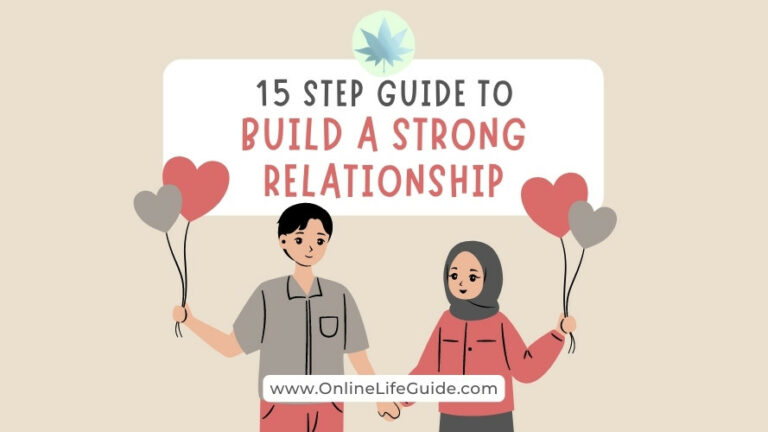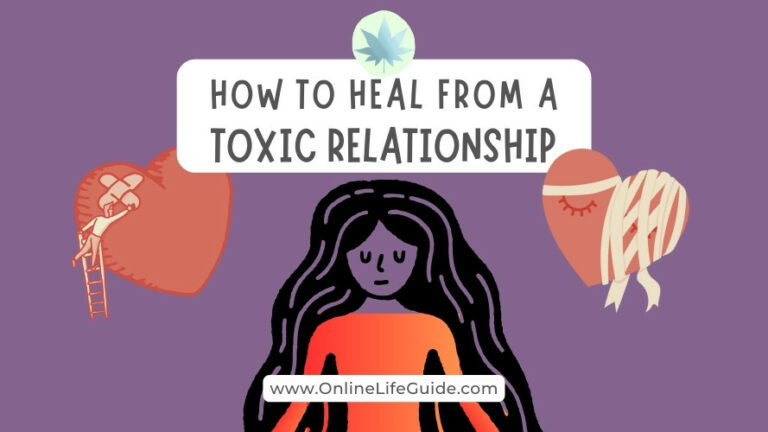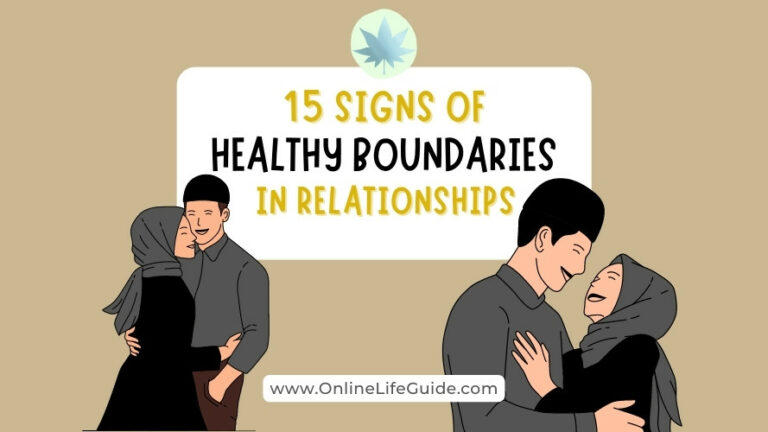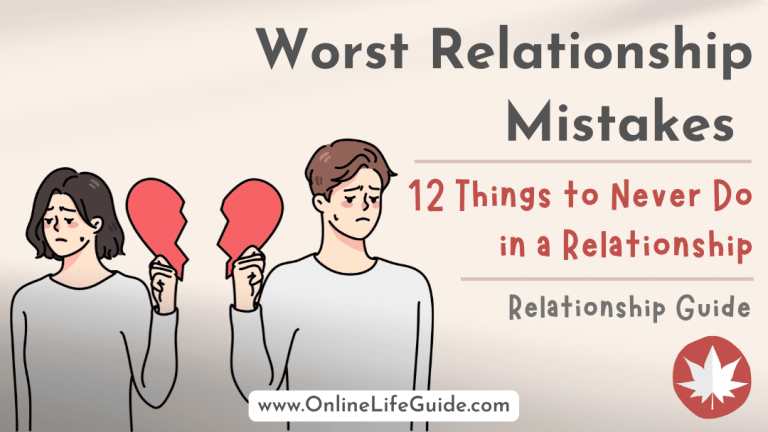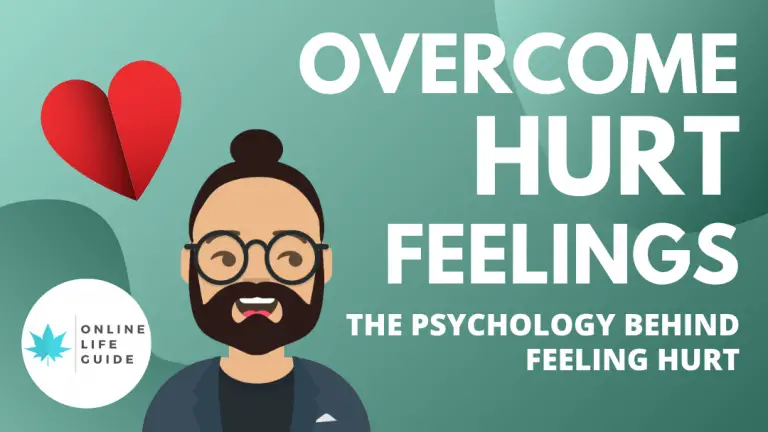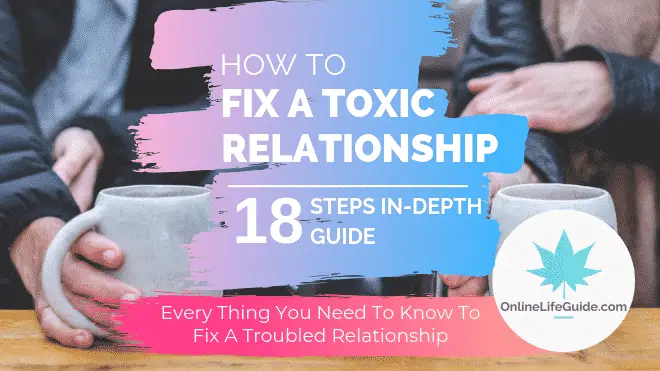Enmeshment vs Intimacy – 12 Key Differences
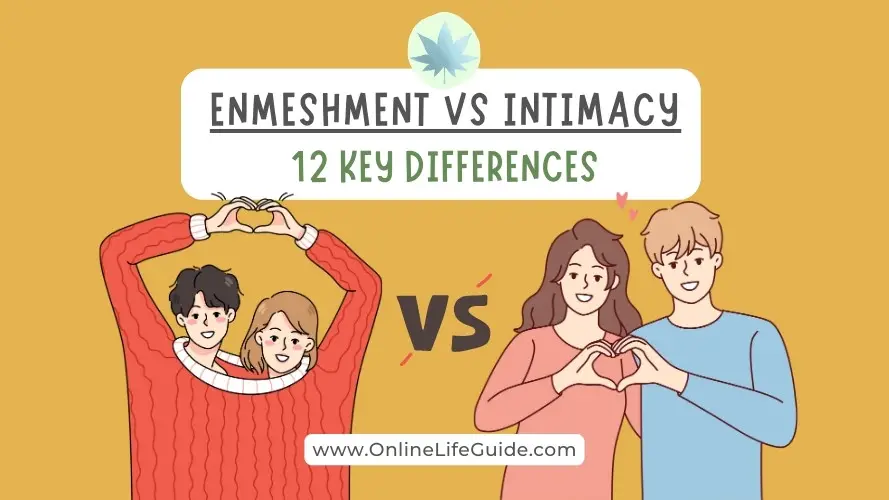
Do you feel like you and your partner are a little too close for comfort?
Do you struggle to connect with them on a deeper level despite spending much of your time together?
Do you feel drained and emotionally exhausted in your relationship?
If you’re nodding your head right now, you might have some enmeshment issues in your relationship.
The problem is, it can often be hard to differentiate between enmeshment and intimacy. A lot of things that we perceive as intimacy might actually be enmeshment but since we don’t realize the difference, we end up normalizing and even romanticizing those habits and behaviors believing them to be part of an ideal relationship dynamic.
Salvador Minuchin, the founder of the Structural Family Therapy who introduced the concept of Enmeshment explains it as the blending and merging of two individuals’ identities and realities as though they were one person.
The main difference between an intimate relationship and an enmeshed one is that in an enmeshed relationship, both partners expect each other to think, feel, and act in the same exact manner as themselves. An intimate couple grows close while having their individual identities intact while an enmeshed couple loses their mental and emotional autonomy in the process.
Think of enmeshment as a tangled ball of yarn. The threads are so tightly wound together that it becomes a mess and very difficult to untangle. Even though the threads are tightly bound, it doesn’t look pretty and is counterproductive to the knitting process.
Intimacy on the other hand is when the threads are weaved together with purpose, intent, and care to create something that is beautiful to see and strong enough to last a lifetime.
Understanding the difference between enmeshment and intimacy is more important than a lot of us realize. In this guide, we will look into:
- Characteristics of Enmeshment
- Enmeshment vs Intimacy (with Practical Examples)
- How to Balance out Enmeshment and Develop Healthy Intimacy in Relationship
Without further ado, let’s dive in and untangle the knots!
Enmeshment vs Intimacy
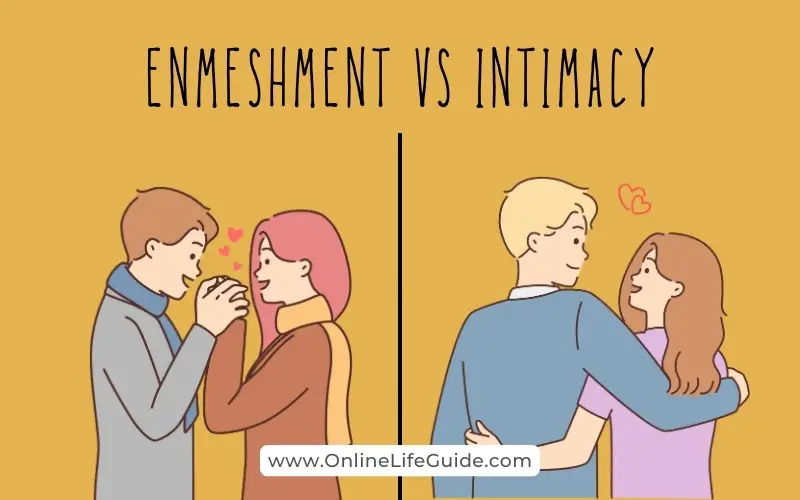
One of the crucial things to understand before you can balance things out a bit in your intimate relationship is to understand the difference between enmeshment and intimacy.
A LOT of people get into trouble with their relationships because they’re not quite clear about what intimacy is and where to draw boundaries.
Many people think that intimacy means having no privacy or space between two people. That is where it all starts.
Apparent closeness does not necessarily mean intimacy (We are using the term “intimacy” holistically here which includes emotional intimacy.)
What is Intimacy?
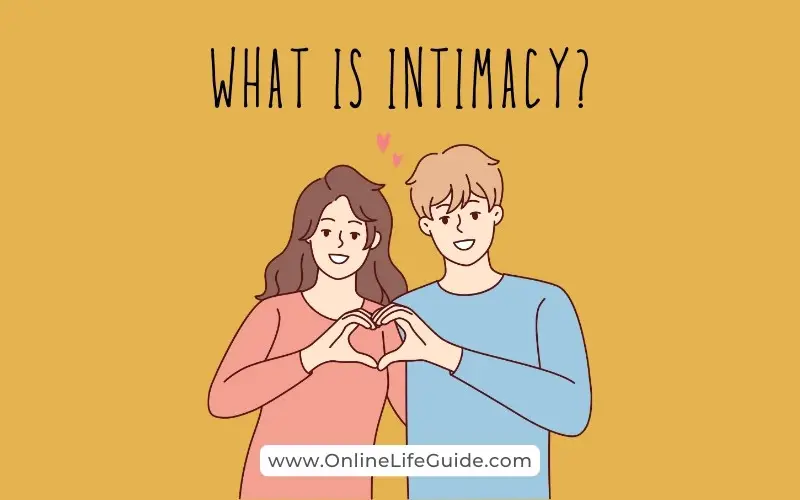
Intimacy is about understanding and knowing each other deeply. It’s about respecting each other’s identity and unique qualities, being considerate of each other’s personal space, and lovingly accepting each other’s differences and vulnerabilities.
What is Enmeshment?
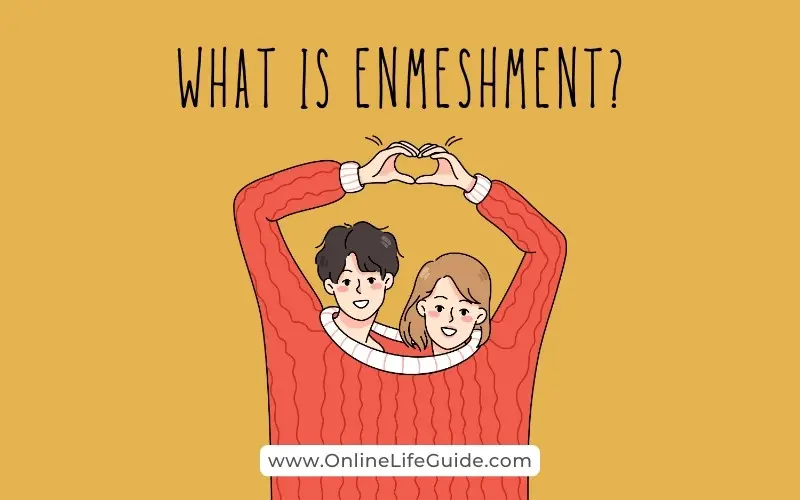
Enmeshment, on the other hand, is when the couple is merged together in a way that their sense of identity depends upon their partner, and they lose their individual autonomy.
Enmeshment is also one partner trying to change the other according to their own mindset, expecting the other to feel and think exactly the same way, like and dislike the same things, have the same priorities and interests, and expect their partner to live life according to their own particular worldview.
If it isn’t yet obvious already, such a route of enmeshment often leads to controlling behaviors and eventually a toxic relationship.
Since it’s important to have a clear understanding of enmeshment, here is a brief overview of what enmeshed relationships really look like.
Characteristics of Enmeshed Relationships
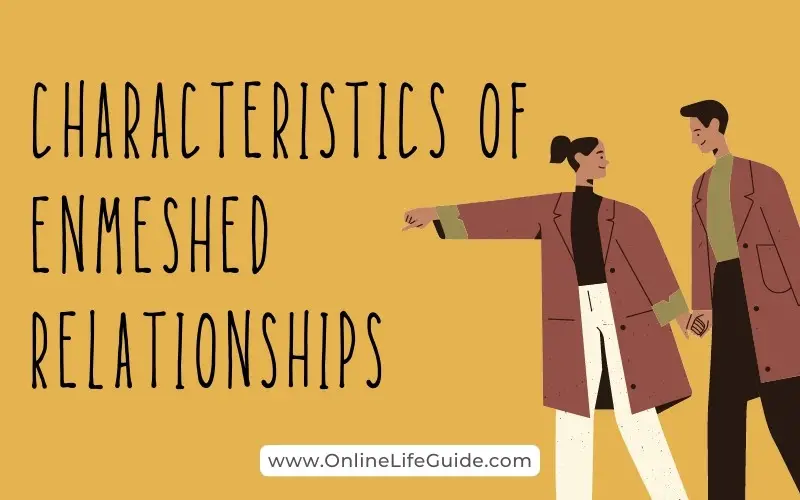
Enmeshment can be a bit tricky to identify at first because you think you are just very close to your partner, and it does seem like that on the outside, but despite all the “closeness” your relationships seem to struggle at times. Let’s not forget the impact it has on your emotional well-being.
What might seem like “closeness” often comes at the cost of your identity, independence, and boundaries.
Once you develop sufficient awareness about what exactly enmeshment is, it will become easy for you to identify where to draw the line and balance things out in your relationship.
There are 3 major characteristics of every enmeshed relationship:
- Lack of Individual Identity
- Lack of Boundaries
- Codependency
Let’s look into each one of them.
Lack of Individual Identity
One of the key traits of an enmeshed relationship is merged identities. People in enmeshed relationships become so intertwined with their partners that they often lose sight of their own sense of self.
Enmeshed partners expect each other to share everything, from thoughts and feelings to interests and hobbies, and when they don’t there is almost a sense of betrayal or disappointment.
Due to this “enmeshing” of identities and personalities, it becomes difficult for the enmeshed individuals to distinguish where one partner ends and the other begins.
Feelings of confusion, resentment, and guilt are very common in enmeshed relationships which beings to take a toll on their emotional well-being over a period of time.
Lack of Boundaries
Individual needs, personal space, and privacy aren’t given much regard in enmeshed relationships.
Lack of boundaries often leads to feelings of suffocation and feeling emotionally drained.
Having individual boundaries is the right of every person and is absolutely vital for our mental health.
There are different types of boundaries for every aspect of our lives. For the sake of relevancy, I won’t go into it but if you want to learn about it in depth, you can read my article 7 Types of Boundaries in Relationships (with practical examples).
Codependency
Codependency is when people rely heavily on each other for fulfillment, validation, and emotional support.
This might seem like a normal and even required thing in a relationship.
Of course, we seek fulfillment in our relationship with our partner, and we love when we get validation and emotional support from them.
Codependency is when you rely solely on your partner to make you feel better, to make you feel worthy and validated, to make all the decisions for you, and to fulfill all your psychological needs.
You are basically mentally and emotionally dependent on your partner and can’t function properly without their assistance.
Enmeshment can eventually lead to codependency if not managed and fixed in time.
People in long-term enmeshed relationships often experience signs of codependency.
Some Examples of Enmeshment in Relationships
- A couple that spends all of their free time together and rarely ever engages in individual activities, hobbies, or interests.
- Partners that have shared social life. Going to the same events, hanging out with the same friends, and knowing everything about each other’s social interactions and private conversations with friends and family.
- Having difficulty in making independent decisions.
- Checking each other’s phones and social media without consent.
- Getting upset with your partner for feeling differently about something or not sharing the same moods.
These are just a few examples to give you an idea of what an enmeshed relationship practically looks like. If you want to dive deeper into it, check out my article 15 Clear Signs of Enmeshment in a Relationship and How to Fix it.
12 Key Differences Between Enmeshment and Intimacy
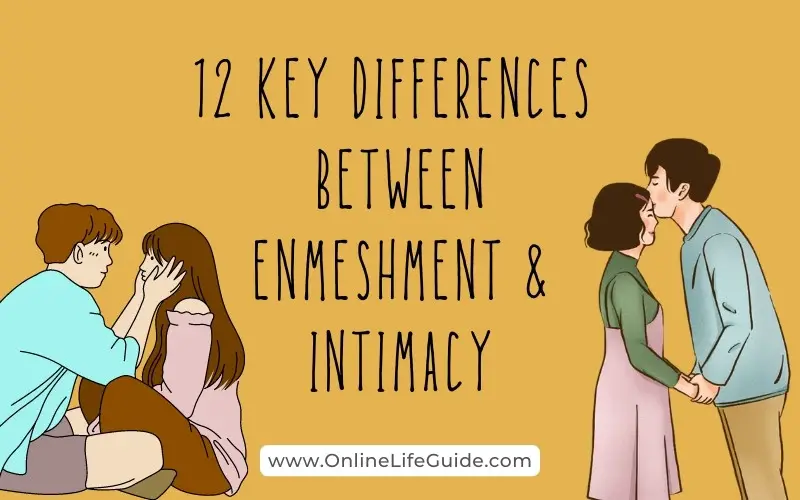
Here is a side-by-side comparison with practical examples to help you get a clear understanding so you are able to easily differentiate enmeshment from intimacy.
1. Co-Dependency vs. Individual Identity
Enmeshment: An enmeshed couple would share all of their interest, hobbies, friends, and preferences. They (or one of them) would often struggle when they are faced with a situation where they have to make decisions on their own. They also find it difficult to enjoy some time by themselves.
Intimacy: A couple who loves spending time together but they are also autonomous when it comes to decision-making as well as pursuing individual hobbies and interests. One partner may prefer to go on a hike on weekends while the other would prefer reading. At times they would take part in each other’s interests, such as going for a hike together, or reading the same book and sharing their thoughts, but they are also totally okay with spending time independently.
2. Avoidance vs. Healthy Communication
Enmeshment: A couple who tries to avoid discussion about pressing issues and sensitive matters. When they do, they mostly end up having fights and heated arguments because they take everything personally, so to avoid such conflicts they rather sweep their problems under the rug than confront them. This obviously leads to more tension and resentment down the road.
Intimacy: A couple who is able to communicate respectfully yet honestly and openly about their feelings and important matters even if it’s difficult and uncomfortable to talk about. They give each other the opportunity to express themselves and listen with an open mind so they can work together to find appropriate solutions to their problems.
3. Intrusion vs. Respectful Boundaries
Enmeshment: Constantly monitoring each other’s devices, eavesdropping on your partner’s conversations, and feeling the need to know everything about each other’s daily activities.
Intimacy: Respecting each other’s personal boundaries and giving each other their rightful privacy. There is mutual trust and no urge to check in on each other’s phones and activities.
4. Emotional Dependency vs. Emotional Support
Enmeshment: Relying solely on each other for emotional support while neglecting other relationships outside of marriage. This often leads to emotional exhaustion and a suffocating relationship for one partner or both.
Intimacy: Providing emotional support to each other when needed but also having other healthy relationships that serve as sources of support and fulfillment for one’s mental and emotional needs.
5. Control vs. Trust
Enmeshment: An enmeshed relationship can often have one person (sometimes both) be the controlling one who tries to dictate their partner’s every move such as what they wear, where they go, and who they spend their time with.
Intimacy: In a healthy intimate relationship, the couple trusts each other’s choices and decisions. Essentially trusting each other’s intellect and ability to navigate through life without trying to spoonfeed or constantly dictate what they should and shouldn’t do.
6. Codependence vs. Interdependence
Enmeshment: Being codependent and feeling like you cannot function without the presence of your partner. Heavily relying on your partner to fulfill all your emotional and practical needs leading to an imbalance in the relationship.
Intimacy: There is interdependence where partners rely on each other for emotional and practical support but they are also capable of functioning independently. It’s more of a teamwork between them instead of dependency, and the support comes from a place of understanding and respecting each other’s needs.
7. Obligation vs. Freedom
Enmeshment: We all have obligations toward our loved ones, but in enmeshed relationships, those obligations can make you feel trapped and forced to do certain things, and if by any chance you don’t do them, you immediately see the consequences reflecting on the quality of your relationship. Things become a lot more transactional.
Intimacy: In a relationship with true intimacy, partners carry out their share of obligations out of sincere love and care. They are not asking for their rights to be fulfilled but instead, focusing on fulfilling their partner’s rights generously without expecting anything in return.
If for some reason one of them temporarily can’t do their best in fulfilling those obligations then there is cooperation and understanding from the other partner.
8. Absorption vs. Shared Experiences
Enmeshment: An enmeshed partner absorbs the emotions and experiences of their significant other and takes them as their own. In doing so, they lose touch with their own emotions and individual experiences. If one of them is having a bad day, the other would absorb their energy and mood, and get into a similar mental state.
Intimacy: Intimacy is when partners “share” experiences and understand each other’s mental and emotional states through empathy, instead of mirroring exactly what the other person is feeling. This allows them to stay grounded and emotionally stable while being in a better position to help their partner or handle difficult circumstances.
Apart from that, they also are able to find joy in sharing simple life experiences and memories. They cherish even the small moments spent together. Since they are in touch with their own self, they are able to experience such moments more deeply and create richer memories.
9. Abandonment vs. Supportive Independence
Enmeshment: If one partner spends time away, the other would feel abandoned leading to feelings of resentment which are often expressed in-directly and passive-aggressively. This also becomes a hurdle in one’s personal and social growth since they don’t like to do anything on their own.
Intimacy: True intimacy is when the couple understands their partner’s needs for individual growth and supports their independence. An intimate partner encourages the other to grow and pursue their interests and creativity, and to have a healthy social life.
10. Compromising Values vs. Shared Goals
Enmeshment: An enmeshed partner compromises their values and wants to please their partner out of the fear of getting into a conflict if they dare to disagree on something.
Intimacy: An intimate couple shares similar values and worldviews. They also work to develop a mutual vision and goals for life and family which they both agree upon.
They are willing to compromise when necessary and work together to fulfill those goals, but at the same time, they aren’t afraid to voice their opinions if they disagree on something or if something goes against their own individual values.
11. Fear of Separation vs. Healthy Attachment
Enmeshment: This is basically one of the defining differences between enmeshment and intimacy. Enmeshment is often an attachment that is rooted in the fear of separation and abandonment.
Intimacy: On the other hand, intimacy is the kind of attachment that is rooted in cherishing the individuality of each other, using differences to balance each other out, and appreciating some diversity in the relationship.
12. Manipulation/Coercion vs. Mutual Respect
Enmeshment: Since enmeshed couples have merged(enmeshed) identities and they are unable to compartmentalize between themselves and their partner, there is a tendency to control the other person and want to make them think, act, and behave like themselves. This can result in a manipulative and controlling dynamic in the relationship.
Intimacy: Intimate couples are close but they don’t try to control each other. If they want to suggest something or encourage their partner to improve in some area of life, they do so very kindly and gently in a way that is not suffocating, manipulative, or forceful. If their partner doesn’t take their advice immediately, they don’t throw shade through passive-aggressive comments, instead, they are patient and allow freedom of choice.
Replacing Enmeshment with Intimacy in Your Relationship
Since enmeshment usually originates from a lack of boundaries, the key to fixing enmeshment is developing healthy boundaries in the relationship.
How exactly do you do that? I have a comprehensive guide on How to Set Healthy Boundaries in a Relationship. You can read it HERE.
Additionally, I have a guide specifically dedicated to fixing enmeshment issues (coming soon!)
Hope this article helped you get a clear understanding of enmeshment vs intimacy. I have several articles on the topics of enmeshment, intimacy, and boundary setting.
You can start by reading the guides mentioned in this article, or you can explore the relationship section of the blog to find exactly what you are looking for.
Take good care of yourself and I’ll see you in the next guide.

